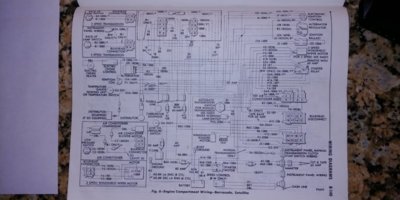I didn't invent anything just resurrected what MyMopar made back in the days, but this time posting the REASONS why it works, instead despite everything without a reason, just because is "dangerous". Let's see, we play with gas on an engine. The gas line is just right at a side of the coil. Isn't that DANGEROUS too? But what happens? Everybody pay attention on engine, suspension, brakes and body, but nobody try to understand electricity, being maybe the EASIER and cheaper to understand and work if you get the interest like everybody gets interest on engines.
The main problem comes from Chrysler's engineering department YES... IS TRUE, BELIEVE IT OR NOT! The very next problem is the ppl who plays with wires and electricity like playing with chinesse sticks without pay attention on the risk on make it wrong, like you do tightenning a gas line to the carb.
Why the first problem comes from factory? Because the LACK of power coming out from poor alts at low speed. This make to sucks continuously from batt. Then you revs up the engine and the alt is able to feed the car and recharge the batt again. This back and forth play is what causes problems. Initially the battery SHOULD work just to crank the engine and occasional loads like powered windows, cigar lighter and stuff like that, able to suck lot of power at certain point, BUT the alt should be able to feed everything which is able to suck constant power, like AC or heater blower, wipers, all the lighting system and of course ignition system.
As soon you get an alt able to provide all the juice the car needs for these systems, the ammeter will NEVER get the power coming throught up to the batt or coming out the batt. Also All the loads MUST BE on alt side of the game ( like factory did ).
When you source any accesory from batt WITH AN AMMETER on car, the ammeter will sense load going to batt, like charging BUT PROBABLY is not charging, just the alt ( if is able ) sourcing the added accesory on the other side of the ammeter.
Then of course, everybody still keeps adding accesories on stock wiring...
Will you source your Hemi with the 318 gas line? I don't think so! Mostly sure you will jump out to a 3/8 gas line, specially if thinking on high revs. So if you add electrical accesories, will need to upgrade the lines too... or not?

















